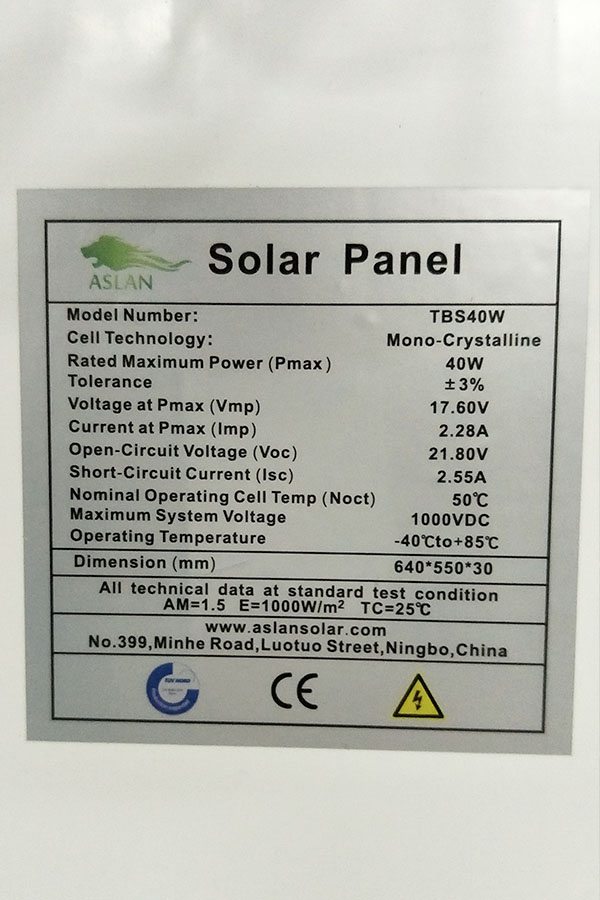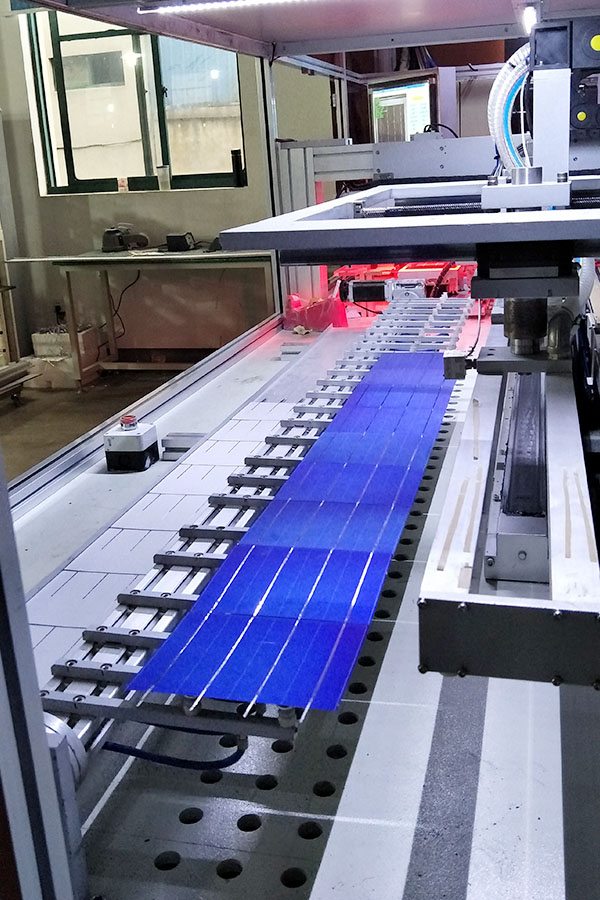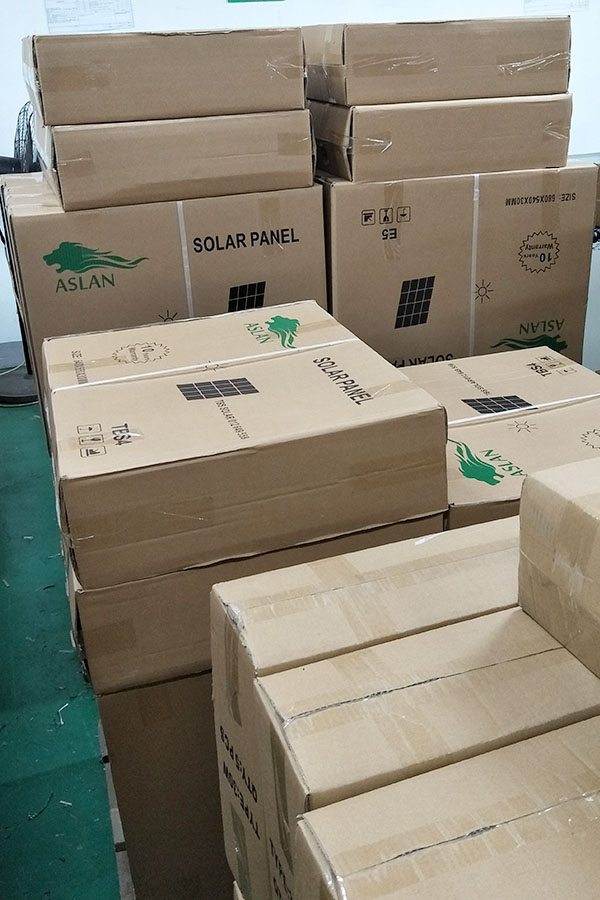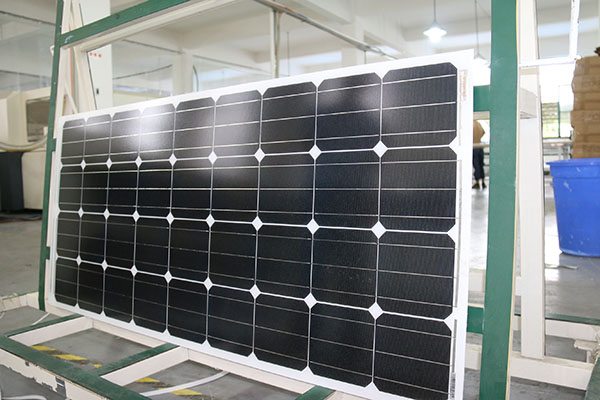6 Years manufacturer Poly-crystalline Solar Panel 60W to Mali Manufacturers
Short Description:
Our company sticks to the principle of "Quality is the life of the company, and reputation is the soul of it" for 6 Years manufacturer Poly-crystalline Solar Panel 60W to Mali Manufacturers, With a wide range, good quality, reasonable prices and good service, we will be your best business partner. We welcome new and old customers from all walks of life to contact us for future business relationships and achieving mutual success!
Poly-crystalline Solar Panel 60W
Technical parameter
Maximum Power(W) 60W
Optimum Power Voltage(Vmp) 17.35V
Optimum Operating Current(Imp) 3.46A
Open Circuit Voltage(Voc) 21.16V
Short Circuit Current(Isc) 3.80A
Mechanical Characteristics
Cell Type Poly-crystalline 156 x 65mm
No of Cell 36 (4x9pcs)
Dimensions 678x657x35mm
Weight 5.0Kg
Front Glass 3.5mm,High Transmission, Low Iron,Tempered Glass
Junction box IP65 Rated
Output Cable TUV 1×4.0mm2/UL12AWG,Length:900mm
Temperature and Coefficients
Operating Temperature(°C): -40°C ~ + 85°C
Maximum System Voltage: 600V(UL)/1000V(IEC) DC
Maximum Rated Current Series: 15A
Temperature Coefficients of Pmax: -0.47%
Temperature Coefficients of Voc: -0.389%
Temperature Coefficients of Isc: 0.057%
Nominal Operationg Cell Temperature (NOCT): 47+/-2°C
Materials of solar panel
1).Solar Cell——Poly-crystalline solar cell 156*65mm
2).Front Glass——-3.2mm, high transmission, low iron, tempered glass
3).EVA——-excellent anti-aging EVA
4).TPT——-TPT hot seal made of flame resistance
5).Frame——anodized aluminum profile
6).Junction Box——-IP65 rated, high quality, with diode protection
Superiority: high quality anodized aluminum frame, high efficiency long life, easy installation, strong wind resistance, strong hail resistance.
Features
1. High cell efficiency with quality silicon materials for long term output stability
2. Strictly quality control ensure the stability and reliability, totally 23 QC procedures
3. High transmittance low iron tempered glass with enhanced stiffness and impact resistance
4. Both Poly-crystalline and Mono-crystalline
5. Excellent performance in harsh weather
6. Outstanding electrical performance under high temperature and low irradiance
Quality assurance testing
Thermal cycling test
Thermal shock test
Thermal/Freezing and high humidity cycling test
Electrical isolation test
Hail impact test
Mechanical, wind and twist loading test
Salt mist test
Light and water-exposure test
Moist carbon dioxide/sulphur dioxide
We have 14 x 250W solar panels on our south facing roof which gives a total of 3000kWp. As you can see at peak generation we get nearly 3000W of electricity produced. The total output from our solar panels is 20kWh per day on the best days over the summer, nearly 7kWh per kWp of solar panels
http://www.solardave.com/index.php/does-akeena-solar-get-their-solar-panels-at-a-discount-video/
SolarDave: Does Akeena Solar Get Their Solar Panels at a Discount price for buying them in volume?
Eric Bowman: There are a lot of things that solar panel costs, volume, quality, there are a lot of components to it, we are the only solar intergrator that has developed our own propiritory panel so we outsource the manufacturing of that to SunTech which at the end of this year will be the largest manufacturer in the world.
They only make the Andalay solar panel for Akeena and Akeena only. It is our patent and our panel noboby can source the panel or install in the panel in the United States.
Because we are a very large solar intergator, one of the largest and we are publicly held and we are on the NASDAQ:AKNS because we only sell that one type of panel for that residentail application our volume is not like a Sharp or a BP that might sell to multiple brokers across the United States.
But we are extremely competitive when it comes to cost and value proposition, realiablity, aestecis and cost. Our clients get a win all the time.
Here is a small mock up of the Andalay panel the biggest difference you are going to see between the Andalay panel and any other panel in the past 30 years including everything that is being installed today, a traditional panel has aluminum racking and a non structural panel that sits on top of that, the wires are connected together and there is a perimeter ground system around that has to go around.
So what we have done for our clients over 2,000 installations in the last 5 years for residential systems they wanted something that looked a little bit better and had a higher reliability over time and what we have done it integrate the actual aluminum racking right in to the module, so the module is structural therfore you do not need any extra aluminum racking. What we have done is take this turn buckle in the top and other one in the bottom.
Then you take the other module and you snap it together you tighten up the turn buckle that draws the panels together so that provides only a 1/8″ gap. Now you have a structural connection at the top and at the bottom and you have redundant grounding which gives us less ground faults, and it looks a lot better and it sits flush with the roof. And it has been a big winner I would say everyone that has purchased this system in Colorado has done it either for the aesthetics or the reliability and it is one of the few non comonitized panels on the market.








